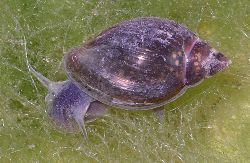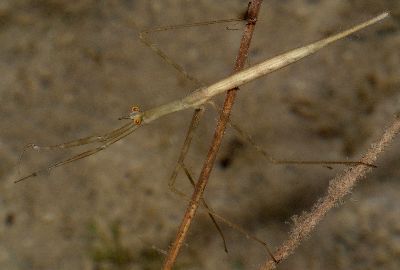
eggs of the gulf coast toad, in our backyard pond

Looking down into clear water is like peering into an untouchable setting, where we can watch but not participate. The most we can do is reach in a couple of feet with our hands and swirl it around, or use a stick to extend our influence a bit further. However, when we disturb the surface tension, our visual contact is greatly reduced, by ripples and their inevitable distortion. We've ruined the perfect window we had and must wait for things to settle back down.
 pond snail, in the Hartman Prehistoric Garden |
There are certainly ways in which we attempt to get more intimate with the aquatic habitat. One can go SCUBA diving or snorkeling, use a net or fishing equipment to bring the animals to the surface, or watch them behind the glass of an aquarium. All of these means certainly contribute to a better understanding and familiarity with our fellow beings on this planet. My favorite method of studying the submerged landscape, though, is perhaps the most basic: looking down into the water from the shoreline. The view is not vast, but it's possible to watch the minute creatures as they go about their everyday business of surviving. Even though it is only about two feet deep, our modest backyard pond provides quite a bit of entertainment in this way. And who can deny the allure of tide pools along the seashore, each filled with colorful and exotic little beasts?
The fact that many of the small creatures found in water are strange looking to us merely enhances the appeal of watching them. Miniscule crustaceans like daphnia and amphipods, hydras, water mites and planaria test the limit of our visual abilities. Crayfish, water scorpions, hellgrammites, and snails are larger but equally enthralling. It is easy to encounter creatures that we cannot even recognize because they have no similar terrestrial counterpart for comparison.
 water scorpion, in a creek at Wild Connections |
Just as it is pleasant to lie back and look up into the clouds, imagining how it would be to move about within the immense white hills and valleys, it is the same to stare down into the inverse, and watch the close, diminutive world in the water just beneath us. (The photos accompanying this essay were all taken looking down into the water.)